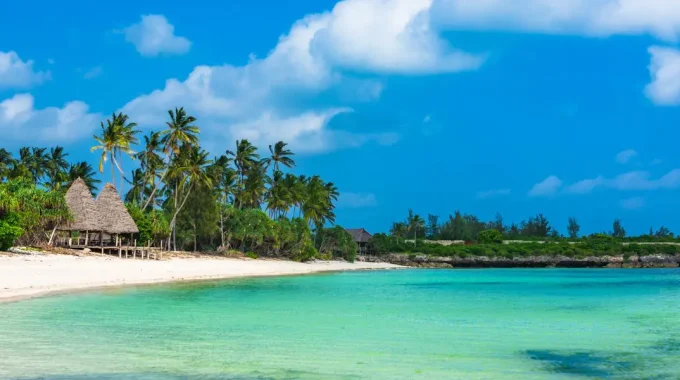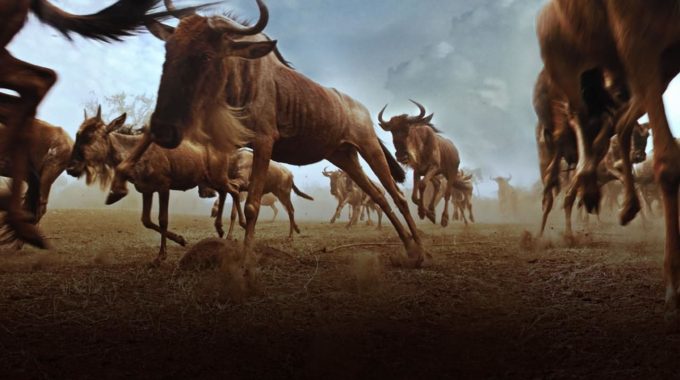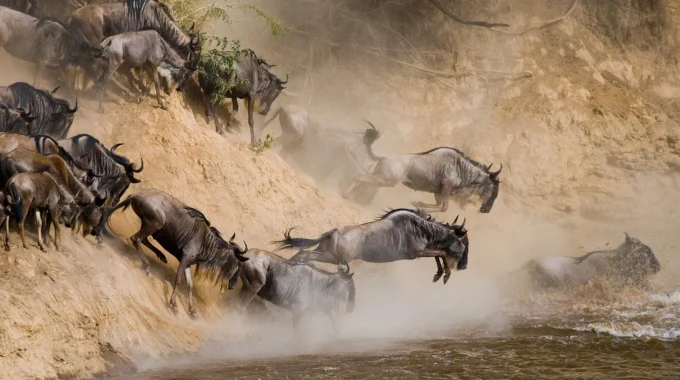Zanzibar, an exotic island paradise in the Indian Ocean, is a dream destination for many…
Mountains in Africa
Mountains in Africa: Africa is home to some of the most majestic and diverse mountain ranges in the world, ranging from volcanic peaks to ancient plateaus. Here’s a detailed look at some of the notable mountains and mountain ranges on the continent:

-
Mount Kilimanjaro (Tanzania)
- Height: 5,895 meters (19,341 feet)
- Type: Volcanic
- Location: Northeast Tanzania, near the Kenyan border
- Description: Kilimanjaro is Africa’s highest peak and one of the world’s tallest free-standing mountains. It is a dormant stratovolcano with three cones: Kibo (the highest), Mawenzi, and Shira. The mountain is famous for its snowcapped summit, despite being located near the equator, and is a popular destination for climbers, with several routes to the top.
-
Mount Kenya (Kenya)
- Height: 5,199 meters (17,057 feet)
- Type: Volcanic
- Location: Central Kenya
- Description: Mount Kenya is the second-highest mountain in Africa and an extinct volcano. It has rugged terrain with several peaks, the highest being Batian. The mountain features glaciers, alpine meadows, and a diverse range of flora and fauna. The surrounding Mount Kenya National Park is a UNESCO World Heritage site.
-
The Rwenzori Mountains (Uganda and DR Congo)
- Height: 5,109 meters (16,761 feet)
- Type: Block Mountains
- Location: On the border between Uganda and the Democratic Republic of the Congo (DRC)
- Known as the “Mountains of the Moon,” the Rwenzori Range is one of Africa’s most remote and enigmatic mountain ranges. The highest peak is Margherita Peak, located on Mount Stanley. These mountains are characterized by glaciers, alpine vegetation, and a cloud forest at lower altitudes. The area is home to a variety of rare wildlife and has been designated as a UNESCO World Heritage site.
-
Table Mountain (South Africa)
- Height: 1,085 meters (3,563 feet)
- Type: Flat-topped mountain
- Location: Cape Town, South Africa
- Description: Table Mountain is one of the most iconic landmarks in South Africa and a global tourist attraction. The mountain’s distinctive flat top is the result of millions of years of erosion. It offers panoramic views of Cape Town, the surrounding coastline, and the peninsula. Table Mountain National Park is home to unique flora, including the famous fynbos plant species.
-
The Atlas Mountains (Morocco, Algeria, Tunisia)
- Height: 4,167 meters (13,671 feet)
- Type: Fold Mountains
- Location: Stretching across Morocco, Algeria, and Tunisia in North Africa
- Description: The Atlas Mountains are a vast mountain range that separates the Mediterranean and Atlantic coastlines from the Sahara Desert. The highest peak is Mount Toubkal, located in Morocco. The mountains are home to a rich cultural heritage, with Berber villages and ancient trade routes passing through them.
-
Drakensberg Mountains (South Africa, Lesotho)
- Height: 3,482 meters (11,423 feet)
- Type: Fault-block mountains
- Location: On the border between South Africa and Lesotho
- Description: The Drakensberg, meaning “Dragon Mountains” in Afrikaans, is the highest mountain range in Southern Africa. The mountains are known for their stunning natural beauty, dramatic cliffs, and diverse flora and fauna. The range is a UNESCO World Heritage site due to its rich biodiversity and ancient rock art created by the San people.
-
The Simien Mountains (Ethiopia)
- Height: 4,550 meters (14,928 feet)
- Type: Highland range
- Location: Northern Ethiopia
- Description: The Simien Mountains are a dramatic range of eroded highlands, known for their deep valleys, jagged peaks, and high plateaus. The highest peak, Ras Dashen, is the tallest point in Ethiopia. The range is home to unique wildlife such as the Gelada baboon and the Ethiopian wolf. It is a UNESCO World Heritage Site due to its geological and biological significance.
-
The Bangued Mountains (Central African Republic)
- Height: 1,300 meters (4,265 feet)
- Type: Precambrian range
- Location: Central Africa
- Description: Located in the Central African Republic, this mountain range is lesser-known but significant for its ancient rock formations and rich biodiversity. The mountains are mostly sparsely populated and are important for their role in local water catchments and ecosystems.
-
Kilimanjaro (Tanzania)
- Height: 5,895 meters (19,341 feet)
- Type: Volcanic
- Location: Northeast Tanzania, near the Kenyan border
- Description: Kilimanjaro is Africa’s highest peak and one of the world’s tallest free-standing mountains. It is a dormant stratovolcano with three cones: Kibo (the highest), Mawenzi, and Shira. The mountain is famous for its snowcapped summit, despite being located near the equator, and is a popular destination for climbers, with several routes to the top.
-
Mount Nyiragongo (DR Congo)
- Height: 3,470 meters (11,380 feet)
- Type: Active volcano
- Location: Eastern Democratic Republic of the Congo, near Goma
- Description: Mount Nyiragongo is one of the world’s most active volcanoes, known for its large lava lake at the summit. The volcano is situated in the Virunga Mountains, a region with a high concentration of wildlife, including mountain gorillas. The lava flows from Nyiragongo have posed significant risks to local communities in the past.
-
The Ethiopian Highlands
- Height: Varies (up to 4,550 meters at Ras Dashen)
- Type: Highland plateau
- Location: Central Ethiopia
- Description: The Ethiopian Highlands, sometimes called the “Roof of Africa,” are a vast and rugged region of mountains, plateaus, and valleys. The region is home to some of the highest peaks in Ethiopia and is historically significant, with many ancient churches and monasteries. The highlands are a key watershed for the Blue Nile River.
These mountains offer a range of opportunities for trekking, mountaineering, and wildlife viewing, and they play an essential role in shaping the ecosystems and cultures of the regions they dominate.



